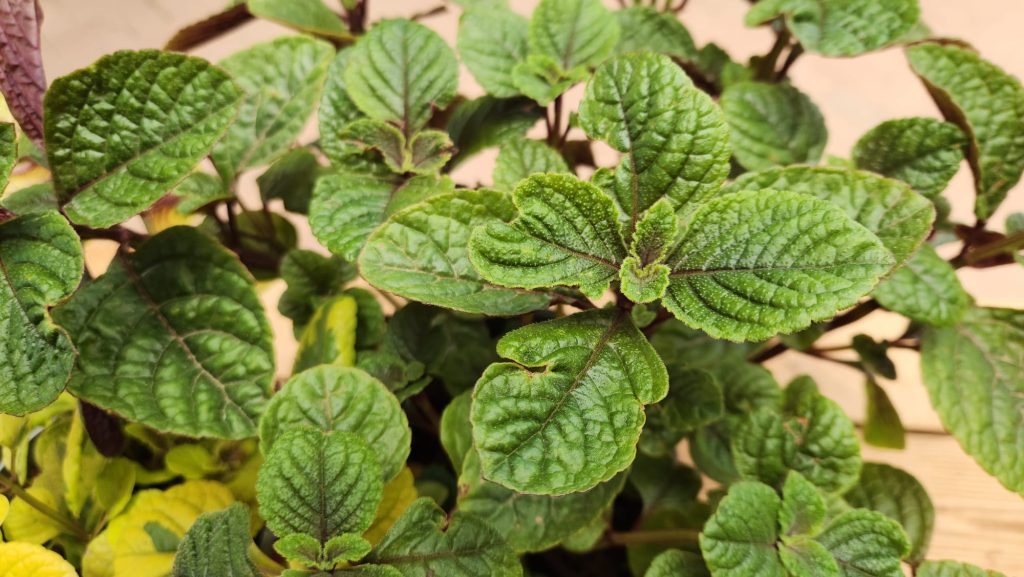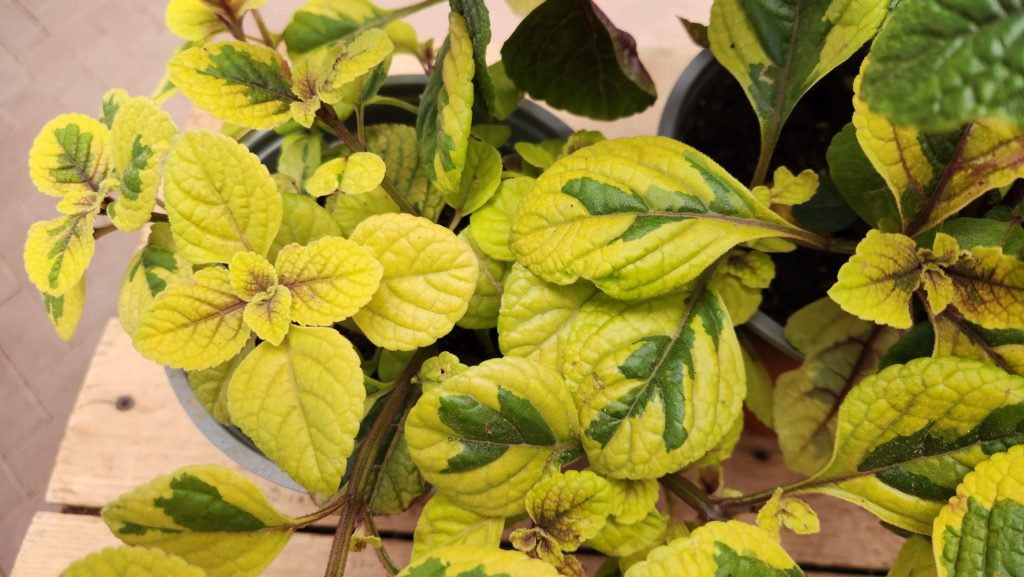
Plectranthus ciliatus and Plectranthus ciliatus 'Troy's Gold' (Eyelash Spur Flower)
Family: Lamiaceae | Origin: Species and cultivar from South Africa
Plectranthus ciliatus
Plectranthus ciliatus is a sprawling plant that grows wild in the rainforests of the subtropical climate in South Africa.
Like many of the plants that creep along the ground in such forests, it has large, rough, dark leaves, the underside of which is crimson-purple, and it loves shade, water, and heat.
Under good conditions, long, abundant inflorescences of small, delicately spotted white or pinkish flowers will develop at the ends of the stems in late summer, adding grace to the plant.

This is a pretty and successful perennial plant, which suffers a little in the cold winters of the mountain region, but recovers easily and thrives for years in most parts of the country with regular watering and occasional fertilization.
It is recommended to plant the Eyelash Spur Flower in full or partial shade in a hanging basket, a tall container or a planter and enjoy its ability to dangle and fill space to create a beautiful and lush cover.
In the warm regions of the country, it can also be used to cover small areas in the garden with regular irrigation and it can even thrive for many years as a houseplant in bright light.
'Plectranthus ciliatus 'Troy's Gold
'Troy's Gold' is a beautifull variegated garden cultivar of Plectranthus ciliatus. The dark green leaves of the species have become golden-yellow, with only a greenish pattern in the center.
Combined with the crimson hue, which remains mainly on the underside of the young leaves and a little on the stems, a colorful and spectacular appearance is obtained. This variety sometimes blooms profusely in late summer, but the main beauty of the plant is in the colorful leaves.

Due to the brightness of the leaves (such leaves have a small amount of chlorophyll responsible for photosynthesis), 'Troys Gold' requires more light than the green species prefering to grow under bright shade or filtered sunlight. Apart from that, it is good for the same uses as the species and looks simply wonderful when combined in a pot with red coleus or other dark-leaved plants.
Sometimes color mutations occur in this plant that cause certain stems to return to bearing green leaves, or to completely lose their green and develop yellow leaves. It is worth pruning such stems if you want to maintain the variegated appearance.
In the mountain area, one should protect it well from severe cold events or prolonged cold.
Both plants respond well to pruning which should be done for renewal after winter or in order to maintain a neat plant in the warm season.
לקריאה על פלקטרנתוס שעיר ופלקטרנתוס שעיר 'טרויז גולד בעברית לחצו כאן

